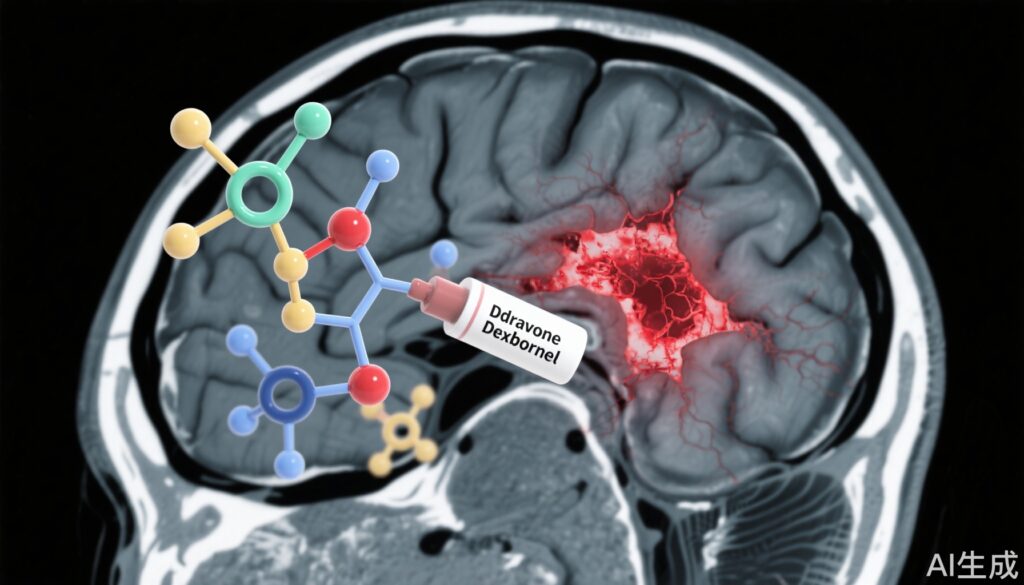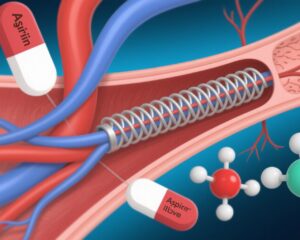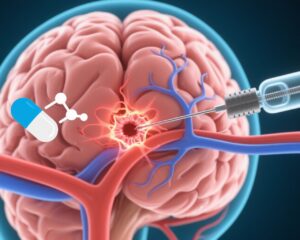Study Background and Disease Burden
Acute ischemic stroke (AIS) is a leading cause of long-term disability and mortality worldwide, imposing substantial clinical and socioeconomic burdens. Despite advances in reperfusion strategies such as thrombolysis and mechanical thrombectomy, many patients experience significant neurological deficits due to ischemic injury and subsequent reperfusion-related oxidative stress and inflammation. Edaravone dexborneol is a novel multitarget cytoprotective agent combining the free radical scavenging properties of edaravone and the anti-inflammatory effects of dexborneol, aiming to mitigate ischemic brain injury via multiple pathways. Previous clinical trials have suggested potential efficacy in improving neurological outcomes post-stroke; however, its real-world clinical effectiveness and safety profile remain to be fully established, particularly across diverse patient populations and routine practice settings. This gap highlights the need for contemporary observational studies to inform translation of trial evidence into clinical practice.
Study Design
This prospective, multicenter cohort study was conducted at 72 centers across China from January 14 to July 4, 2023. Eligible participants were adults aged 18 years or older, diagnosed with AIS within 14 days of symptom onset, and a prestroke modified Rankin Scale (mRS) score of 0 or 1, indicating no or minimal functional disability before the stroke event. Patients were categorized into two groups based on treatment: those receiving edaravone dexborneol (exposed group) and those not receiving this therapy (unexposed group). The primary clinical endpoint was the proportion of patients achieving a favorable functional outcome at 90 days, defined as an mRS score of 0-1, indicating no significant disability. Secondary endpoints included incidence of symptomatic intracerebral hemorrhage (sICH) during hospitalization and all-cause mortality within 90 days. Risk adjustment methods included multivariable logistic regression, propensity score matching (PSM), and inverse probability of treatment weighting (IPTW) to control for confounding variables.
Key Findings
A total of 4,401 patients were enrolled (66.8% male; median age 65 years, interquartile range 57-72). Among these, 3,017 (68.6%) received edaravone dexborneol. Compared to the unexposed group, patients treated with edaravone dexborneol were slightly younger (median age 65 vs. 66 years), had higher baseline NIH Stroke Scale scores indicative of more severe neurological impairment (median 3 vs. 3, with higher interquartile range), and presented to hospital more rapidly after symptom onset (median 7.0 vs. 10.4 hours).
The primary outcome—favorable functional status at 90 days—was achieved in 68.6% of the edaravone dexborneol group versus 66.0% in the unexposed group. After adjustment, the treatment was significantly associated with increased odds of favorable outcome (adjusted odds ratio [aOR] 1.23; 95% confidence interval [CI] 1.06-1.43; P-value < 0.05), denoting a modest but meaningful clinical benefit.
Regarding safety, the incidence of sICH was low in both groups (0.4% vs. 0.6%), with no statistically significant difference (aOR 0.44; 95% CI 0.14-1.44). Similarly, 90-day all-cause mortality rates were comparable (2.1% vs. 3.3%, adjusted hazard ratio 0.89; 95% CI 0.58-1.37). These findings persisted across PSM and IPTW analyses, reinforcing robustness.
Expert Commentary
This large-scale, real-world cohort study substantiates prior clinical trial indications that edaravone dexborneol is associated with modestly improved functional recovery post-AIS without compromising safety. The multitarget mechanism, incorporating both antioxidant and anti-inflammatory effects, may offer a therapeutic advantage by addressing multiple pathophysiological components of ischemic injury. Notably, the observed benefit was independent of baseline stroke severity and time-to-admission differences after rigorous adjustment.
However, inherent limitations include the observational design, which cannot fully eliminate residual confounding, and the study’s restriction to a Chinese patient population, which may limit generalizability. Additionally, relatively mild stroke severity in the cohort and short-term follow-up constrains interpretation of broader applicability and long-term impact. Confirmation through randomized controlled trials in diverse cohorts is warranted.
Conclusion
Edaravone dexborneol administration in patients with AIS is associated with a statistically significant increase in favorable functional outcomes at 90 days and demonstrates a reassuring safety profile in a large, multicenter Chinese cohort. This real-world evidence supports its clinical use as a cytoprotective adjunctive treatment to improve functional recovery after stroke. Future studies should validate these findings across heterogeneous populations and explore long-term neurological and quality-of-life outcomes to guide broader adoption.
References
Ma G, Mo R, Yao X, Nguyen TN, Song Z, Xie W, Yuan G, Zuo Y, Wu Y, Lei S, Meng S, Wu Y, Jiang Z, Liu H, Ren Y, Wang P, Gao D, Chang H, Guo Y, Zhang Q, Ma Q, Zhong L, Song H, Hao J. Clinical and Safety Outcomes of Edaravone Dexborneol in Acute Ischemic Stroke: A Multicenter, Prospective, Cohort Study. Neurology. 2025 Aug 26;105(4):e213949. doi:10.1212/WNL.0000000000213949. Epub 2025 Aug 5. PMID: 40763317.



